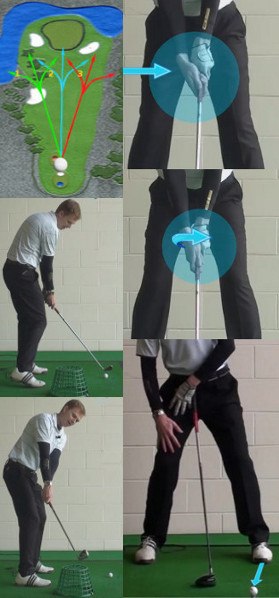You're Correct!

There are a number of different destructive shots players can develop such as the pull hook.
The pull hook starts left of the target before curving further left during flight to finish well left of the target (for a right handed golfer). Like all other golf shots, the direction and curvature of the ball is determined by certain impact factors such as club face angle and club path. To produce a pull hook the swing path must be from out-to-in (cutting across the body). This will cause the club to swing toward the left of the target line. For the curvature to occur and send the ball further left the club face must be closed to the path.
There are a number of different swing factors at work to cause this shot which could be hard to identify without seeking professional advice. However, here are a number of possible faults and how you can fix them.
Strong Grip
An overly strong grip will see the hands force the club face closed at impact. A grip would be at its strongest when looking down at address, the left hand is wrapped over on top of the grip (for a right handed golfer) with all four knuckles visible and the right hand is tucked underneath the grip with no knuckles visible.
As a general rule of thumb, golfers need to see 2½ knuckles on the left hand and 1½ knuckles on the right hand. In this position the Vs created by the left thumb and forefinger and the right thumb and forefinger should point up at the right shoulder. This is a neutral grip.
Swing Path Fault
To cause a pull hook the club must be traveling on an out-to-in swing path. This must be eradicated if the afflicted golfer wants to stop the destructive shot. The correct swing path for a straight shot is slightly inside-to-square-to-inside. Use this drill to help change your swing path.
- To groove the inside-to-square-to-inside swing path place a line of tee-pegs or a small box just outside the ball.
- By hitting balls with the tee-pegs or box on the outside its easier to groove a more consistent inside-to-square-to-inside swing path.
- If any of the pegs or box is hit the club will still be traveling on an out-to-in swing path.
Sorry Try Again! - See Explanation Below
An out-to-in swing path is indeed necessary for a big slice to occur, however, there are a number of different ball flights which can occur from a number of different paths, golfers should understand the relationship between the path and club face for correct diagnosis.
Sorry Try Again! - See Explanation Below
Alignment is also incredibly important. For example, a player could be aiming 50 yards right of the target and pull, hooking the ball back on line. Although the shot would occasionally end up around the target, it would still be a pull hook.
Sorry Try Again! - See Explanation Below
In some cases players can play with a pull hook quite successfully, however, it can become a problem when grooved. For example, imagine grooving a pull hook then being faced with a situation of trying to hit a high straight shot. The swing paths and face angles are a million miles apart. For future adaptability, groove a neutral grip and inside-to-square-to-inside swing path.







